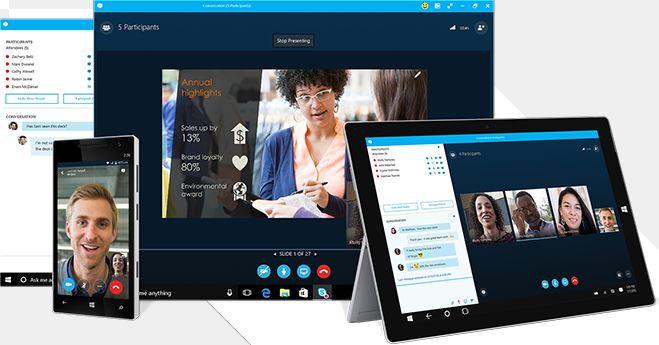

Quick Links
Quick Links
Ever wonder what the best method is for managing remote freelancers?
It’s a common misconception in managing remote freelancers that there is less need to actively manage once the individual has been taught their initial task. I’m not sure why, but managers feel a disconnect when the hire is remote and they aren’t able to see them every day.
It’s definitely more difficult to develop a relationship with a freelancer that is hundreds and thousands of miles away from your office and who you only talk to through chat.
But that doesn’t mean that all is lost!
If you want to get the maximum performance out of a team, there are a few easy management tactics you can adopt that will make working with freelancers a great experience.
At FreeUp, we’ve been using this unique method of management since we launched in 2016. We’ve learned from our mistakes and we’ve generated a list of secrets that can help you effectively manage remote freelancers.
Secret #1: Nail The Onboarding
The first step is to make sure you hold an official onboarding on their first day. Don’t dive straight into tasks. Make sure to take the time to get them set up fully:
- Welcome them to the team
- Tell them about your company
- Show them how things work
- Tell them about yourself personally
- Get to know them personally
- Introduce them to key people they’ll be working with
- Show them how their work impacts others and the company as a whole
The idea is to really integrate them into their new position within the company. A big part of this is going beyond just the scope of work and developing a real relationship. This builds rapport and encourages a buy-in from the freelancer.
Similar to any other relationship, you need to take the time to get to know the remote freelancers that you are hiring for your company. It doesn’t have to be hour-long conversations either. Simply make it a habit to spend 20-30 minutes when you first hire a new remote freelancer to share stories and gain a deeper understanding of each other.
Give a live video tour if you can so they can get more context. The more interest that you show and the more that a remote freelancer knows about you and the company, the harder they are going to work to achieve their goals.
Secret #2: Set Clear Expectations
Remember that remote freelancers tend to work with many different clients throughout one calendar year. Because of the large variety of clients, there is no standard of what is expected of them when working with new clients. And they cannot read your mind, either.
The second secret to effectively managing remote freelancers is to set clear expectations from the very beginning.
This means putting in writing what you expect. Here are some types of expectations you should not leave out:
Communication
Tell the remote freelancer the hours that you are at the computer and the best way to reach you. Share times that they should not try to reach you as well.

Regular Meetings
Talk about convenient times for both of you to get online to talk about progress, share feedback, and ask questions. Make adjustments for each other. Schedule these regular meetings so it’s clear that they’re important, and tell freelancers what to prepare for each meeting. You can use an app like Calendly or Google Calendar to make it easy on both of you.
Emergency Situations
It often happens that remote freelancers have issues with electricity or Internet because of natural disasters and system upgrades. In these situations, communicate what you expect them to do and make sure they can comply.
Work Schedule & Hours
Ask each remote freelancer about their schedules and work out the hours they can set for you. Make sure these working times are good for both of you. By clearly communicating your expectations on times of day and hours per week, you will always know when a freelancer is online, performing their given tasks.
Give the remote freelancer clear guidelines on how many hours they should be working each day on your tasks. You don’t want to get into a situation where you are paying too much for freelancers. Create a budget and stick to it.
Goal Setting
Just like in-house workers, remote freelancers thrive when they have set goals. If you have a task that is repetitive, such as fulfilling orders, give a remote freelancer a realistic number of orders to complete each hour. This is also one way to hold remote freelancers accountable as you motivate them at the same time.

Secret #3: Include Freelancers In Regular Company Meetings
Remote freelancers are motivated by being part of the whole. We recommend including freelancers into your company-wide meetings where it makes sense. This is also a convenient way to provide general company updates, highlight anyone’s exceptional work, and welcome any new remote freelancers into the fold.
Shout-outs at group meetings inspire remote freelancers and make them feel that they are a part of something bigger than their set of tasks. As with any freelancer, that feeling of being a part of the group and contributing to the big picture motivates them to work harder and stay focused on their tasks.
Secret #4: Get Clear On Goals & Milestones
Make sure you are very clear about the goals that you’d like to achieve and the milestones that you expect to reach within certain timeframes. Communicate these with freelancers regularly and encourage them to give feedback and ask questions.
Think about what your company looks like in 6 months or a year and the actions that you’ll need to take to get there. If you don’t know what types of milestones you should set, this is a great conversation to have with freelancers to generate ideas and agree on a set of expectations.
This will give you a clear target that you can work toward together. It’s also especially useful when tasks tie into each other — you don’t want to be thinking one freelancer is missing their targets when it was really because another freelancer missed theirs. Then everyone knows when they’re doing a good job or are falling behind.

Secret #5: Hold Weekly 1-on-1 Meetings
Hold a weekly 1-on-1 with each of your direct reports at the same time each week. This will give you a consistent schedule to give feedback, ask questions, and help move projects along.
This will also help you avoid the dreaded “I have no idea what’s going on with my freelancer” syndrome. You don’t want work being done incorrectly for months on end, only to discover it when you finally find the time to check on it.
By making 1-on-1s a consistent meeting, you’ll also ensure that you’re always on track towards your milestones.
Secret #6: Create Required Daily and Weekly Updates
In order to hold remote freelancers responsible for their work and to keep regular channels of communication, we recommend requiring daily and weekly reports.
Example
As you begin working each day, please Skype me to say that you will be starting. When you are done, Skype me a breakdown of what you accomplished and where you struggled, if you did.
At the end of each week, please send me an email summarizing your work for the week. This email should indicate if you met your goal,the reason if you did not, and what your plan is for the next week.
By setting up these daily check-ins, you always know what the remote freelancer is doing and you can provide feedback where it is needed.

Secret #7: Give Remote Freelancers a Growth Path
Find ways to motivate remote freelancers by showing them how they can take on new responsibilities and improve their roles for the greater good. This can be as simple as monthly evaluations, goals that must be reached for promotions, and communication of opportunities to take on additional tasks.
Remote freelancers are highly skilled at their given expertise, but most also yearn to learn and contribute in other ways. If you can place remote freelancers in a position where they can grow, it will only benefit your company and raise the bar for remote freelancers that you hire in the future.
Conclusion
By following these 7 tips, you’ll be well on your way to having a well-oiled machine:
Onboard freelancers with the goal of developing a positive working relationship and integrating them comfortably into the team. Take time to make them feel welcome and tell them about your company. Set clear expectations with freelancers on how you want them to communicate with you, what hours they commit to working with you, and the goals that they will target.
Include freelance hires in company-wide meetings so they will know the important roles they play and feel how important they are to the whole. Set goals and milestones and invite freelancers to weigh in regularly and make adjustments so the system doesn’t get bogged down. Hold weekly meetings and set and review daily and weekly updates with each hire so that everyone stays on track.
Finally, always give remote hires a growth path so they can see clearly how they can move onward and upward with your company.
Have any additional tips we missed? Let’s have a conversation on socials!

Hi Connor,
Smart tips! Telling workers about you gives you a bonding/connecting point. So folks can get to know you, like you and trust you. Once you have the trust thing down, you are golden. Things flow so smoothly when both parties genuinely like each other. Thanks for sharing!
Ryan
Spot on!
Thanks for this – I learned a lot.
As a freelancer marketer, I’ve worked for clients who adopted most of the tips here, and needless to say, we had a smooth relationship.
A key to success is being able and willing to effectively manage people. Remote workers want to see their employers as humans and not some buttoned-up order factory. So, this piece resonates with me.
I’m glad I found it out!
I really appreciate this post. I’ve been looking everywhere for this! Thank goodness I found it on Bing. You have made my day! Thanks again!
I went over this web site and I think you have a lot of great info , saved to fav (:.
I enjoy your writing style genuinely loving this website .
Great Post,Keep Writing!!!
I have to admit that I was skeptical at first, but I tried the relationship angle and it has greatly improved our mutual respect and communication, and then also our output. Game changer for me!
For me, opportunity to grow has been the real game changer. Thanks for the other tips as well, will def be testing them out!
Be present and maintain structure…. Golden!
Communication with remote hires and setting schedules are two of the most effective ways to get things done. Helpful tips, thanks!